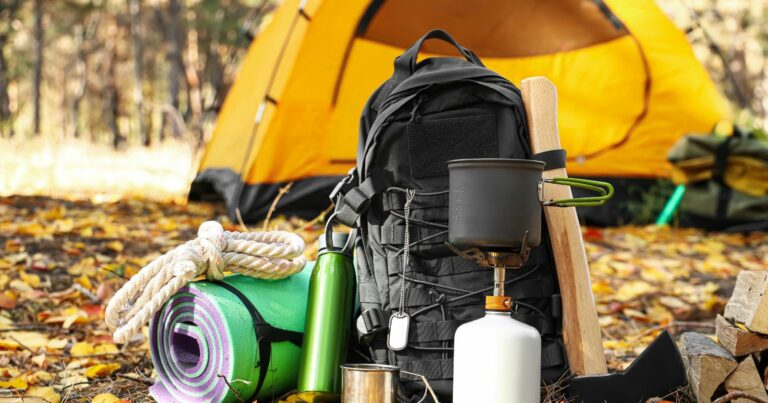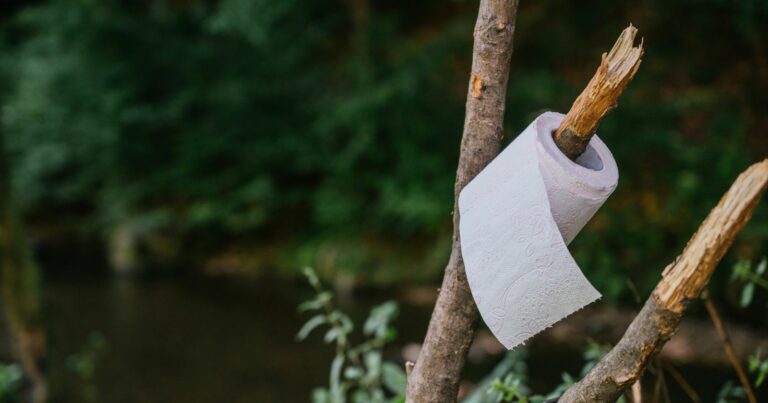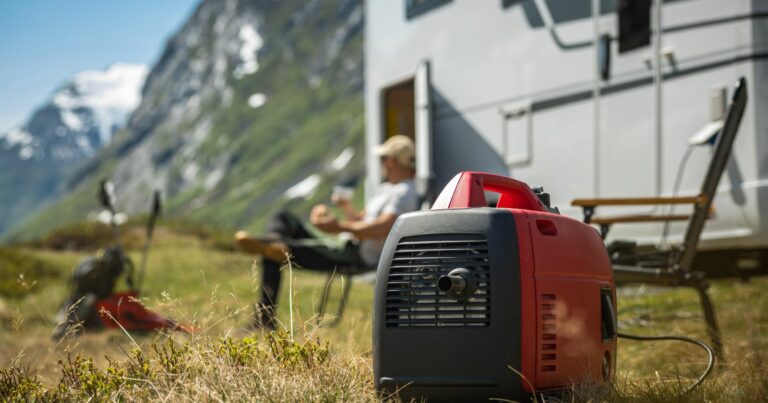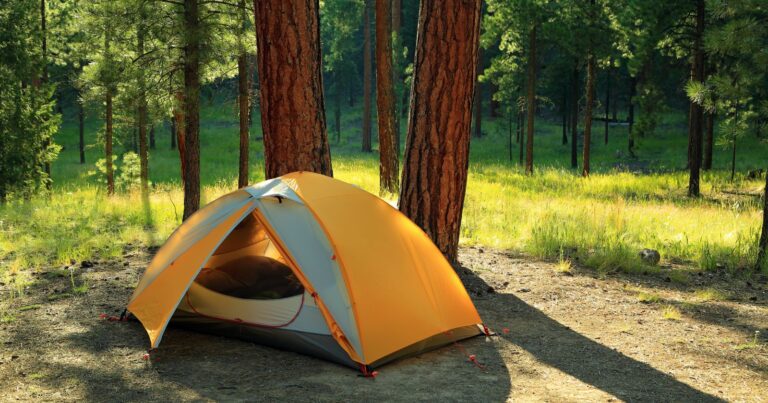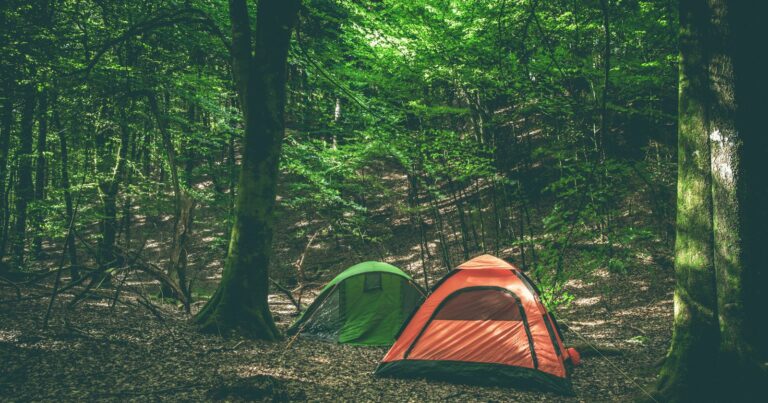How to Set Up the Perfect Campfire for Cooking, Warmth & Fun
Sitting around a crackling campfire under the stars is one of the best parts of camping. But starting and maintaining a safe fire takes some skill. If you are new to camping, you may find yourself struck with matchbook in hand wondering how to get a blaze going.
Don’t worry, with a few key supplies and these step-by-step instructions, you’ll have a cozy campfire in no time. You’ll be a pro at choosing the right fire spot, prepping the fuel, and lighting and tending the flames. We’ll walk through fire pit setup, tinder and kindling tips, and fire safety so you can enjoy this classic camping tradition.
Follow this guide to set up the perfect campfire for cooking meals, making s’mores, and staying warm on chilly nights. You’ll be a fire master and have the entire campground gathered around your flames in no time. The glow of a well-built campfire brings people together and creates lasting camping memories.
Choosing the Right Campfire Spot
Picking an appropriate area is crucial for fire safety and performance.
Location
Select a spot at least 15 feet away from tents, shrubs, overhead branches, or other flammables. Choose a site with dirt or sand—never light a fire directly on grass or leaves.
Fire Pit
Clear a circle about 5 feet wide of all rocks, sticks, and debris. Dig a shallow pit in the center and surround it with rocks, gravel, or a portable steel ring. This contains the fire.
Prep the Pit
Remove any combustible material or ground cover down to the dirt or sand. Have a bucket of water and shovel nearby to extinguish the fire if needed.
Gather Your Fire Making Supplies
These materials are key for starting, feeding, and maintaining your campfire:
- Tinder – Very fine, fluffy, easily ignitable items like dry grass, birch bark, wood shavings, or lint.
- Kindling – Thin sticks, twigs, or wood splinters ranging from pencil to finger width.
- Firewood – Dry seasoned hardwood logs, split into different thicknesses.
- Ignition Source – Matches, lighter, flare, or magnifying glass.
- Fire starter – Commercial products like fatwood, wax-filled cotton balls, or dryer lint provide an extra ignition boost.
- Shovel, bucket, water – Critical for fire safety.
- Optional: axe or saw – For splitting logs to size.
Step-by-Step: Build Your Campfire
Follow these instructions to stack a tepee-style campfire built to last:
1. Make a Tinder Nest
Fluff up a large handful of fine, dry tinder in the center of the fire pit. Birch bark, pine needles, wood shavings, lint, and dryer fuzz all work great.
2. Arrange Kindling
Stack pencil to finger-width kindling sticks over the tinder in a tipi shape. Leave air gaps between sticks for oxygen flow. If needed, use a fire starter like petroleum jelly-infused cotton balls to extend the burn.
3. Light From Below
Kneel to ignite the tinder nest at its base using matches or a lighter. The flame will slowly spread up through the teepee as the kindling ignites.
4. Add Small Logs
Once the kindling is burning well, add some small 1-3 inch diameter logs to the fire. Start with just 2-3 pieces, arranged with air space in between.
5. Gradually Add Larger Logs
As the fire progresses, continue building up the size of the logs. Place them carefully to allow airflow. Add 3-4 larger pieces at a time as needed to maintain the fire.
6. Maintain Proper Size
Add more logs gradually to keep the fire at the desired size. Don’t overload it with too much wood at once, which can smother the flames.
Fire Safety Tips
- Monitor the fire continuously and don’t leave it unattended, even briefly.
- Keep water, shovel, and bucket within reach to douse escaping flames or embers.
- Allow the fire to burn down completely before leaving the site.
- If it’s too windy, postpone the fire as wind can spread sparks and embers.
- Take care with clothing around the fire. Don’t wear overly loose or flowing fabrics.
- Teach children proper fire safety rules and supervise them closely.
- Check current fire restrictions and bans before building any campfire.
Troubleshooting Common Campfire Issues
Smoky Fire
This means the wood is burning inefficiently. Open up the teepee shape and rearrange logs to improve airflow. Avoid stacking logs tightly together. Add smaller pieces of kindling to ignite larger logs.
Fire Goes Out Quickly
If the fire keeps dying prematurely, it needs more air circulation. Re-stack logs in a loose teepee. Make sure you begin with dry, finely divided tinder. Add kindling generously to sustain the fire.
Flames Too Short
Small, weak flames mean you need more substantial fuel. Gradually add larger, thicker logs to build up the fire intensity. Stack them vertically on the ends for more airflow.
Fire Spreads Outside Pit
Burning debris floating from the fire indicates it is too large and rambunctious. Let it calm down by halting additional fuel. Ensure the pit has ample clearance from flames.
Cooking Over the Fire
The glowing coals of an established campfire are perfect for cooking.
- For kabobs or foil packets, position food near but not directly in flames.
- To roast on a spit, place meat above embers, rotating slowly.
- Set cast iron Dutch ovens off to the side, nestled in coals.
- Keep food a safe distance from smoke to prevent unpleasant flavor.
Frequently Asked Questions
Q: What type of wood burns best in a campfire?
A: Look for seasoned hardwoods like oak, maple, or birch. Soft woods like pine burn fast and pop. Hardwoods create hotter, longer-lasting coals.
Q: Can I use gasoline or kerosene to start the fire?
A: Never use flammable liquids! They are extremely dangerous. Use fire starters made specifically for camping.
Q: Is it okay to build a fire on the sand at the beach?
A: Avoid fires directly on flammable surfaces like dry grass or sand. Build on dirt or gravel areas and use a fire ring to contain it.
Q: How close can I build a fire to my tent?
A: Allow at least 15-20 feet clearance between the tent and fire pit. Embers can float surprising distances.
Q: Can I leave the fire briefly to grab supplies?
A: Never leave a campfire unattended, even very briefly. Monitor continuously until fully extinguished.
Enjoying Your Campfire
Now it’s time to relax and make memories around the crackling flames! Roast hot dogs and marshmallows, share stories, sing songs, and revel in the magical glow. Your campfire provides warmth, community, and comfort under the stars.


